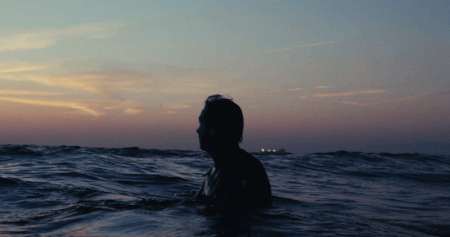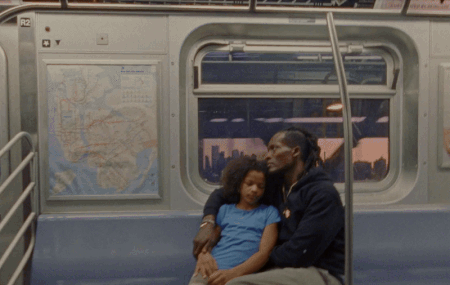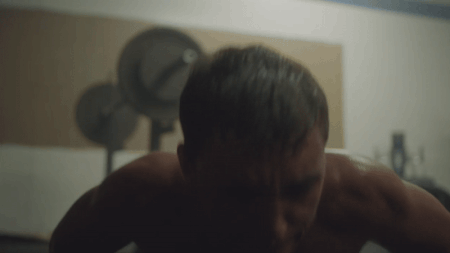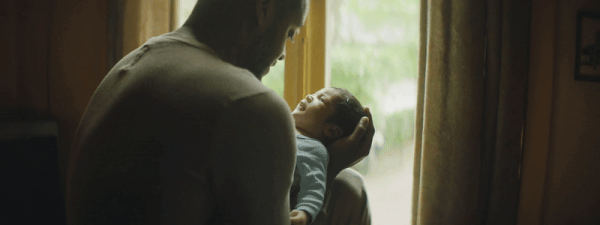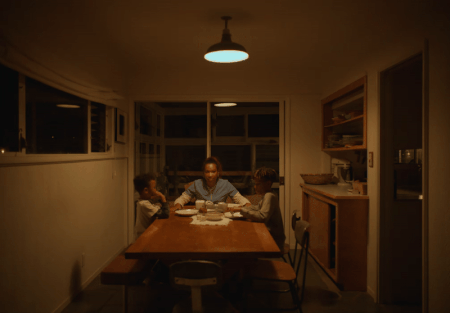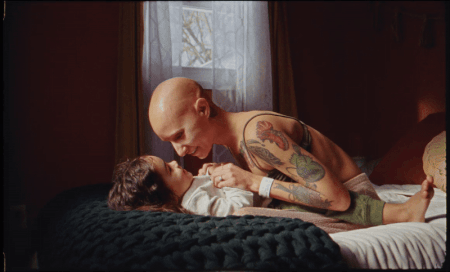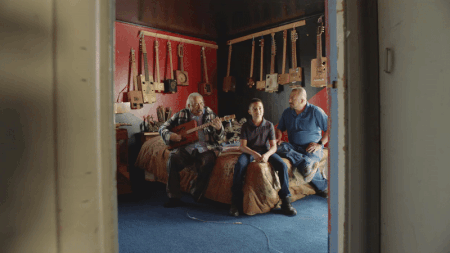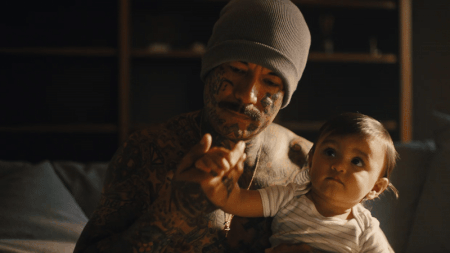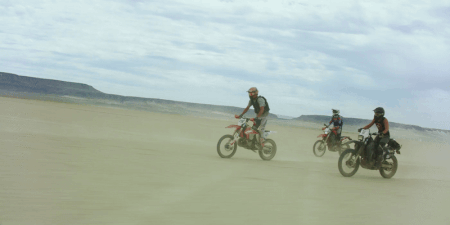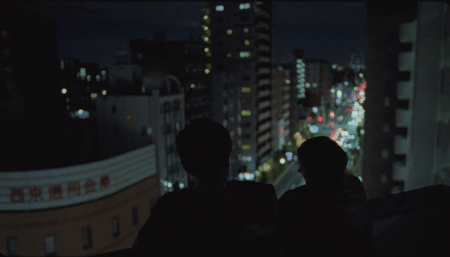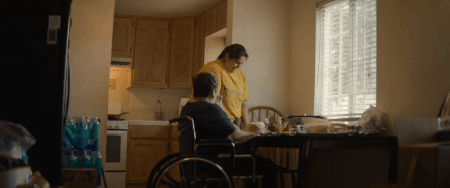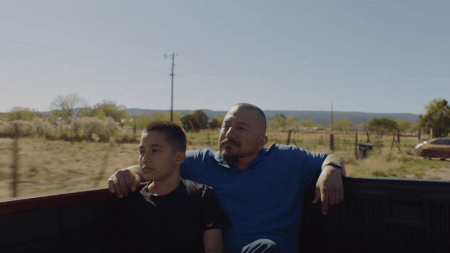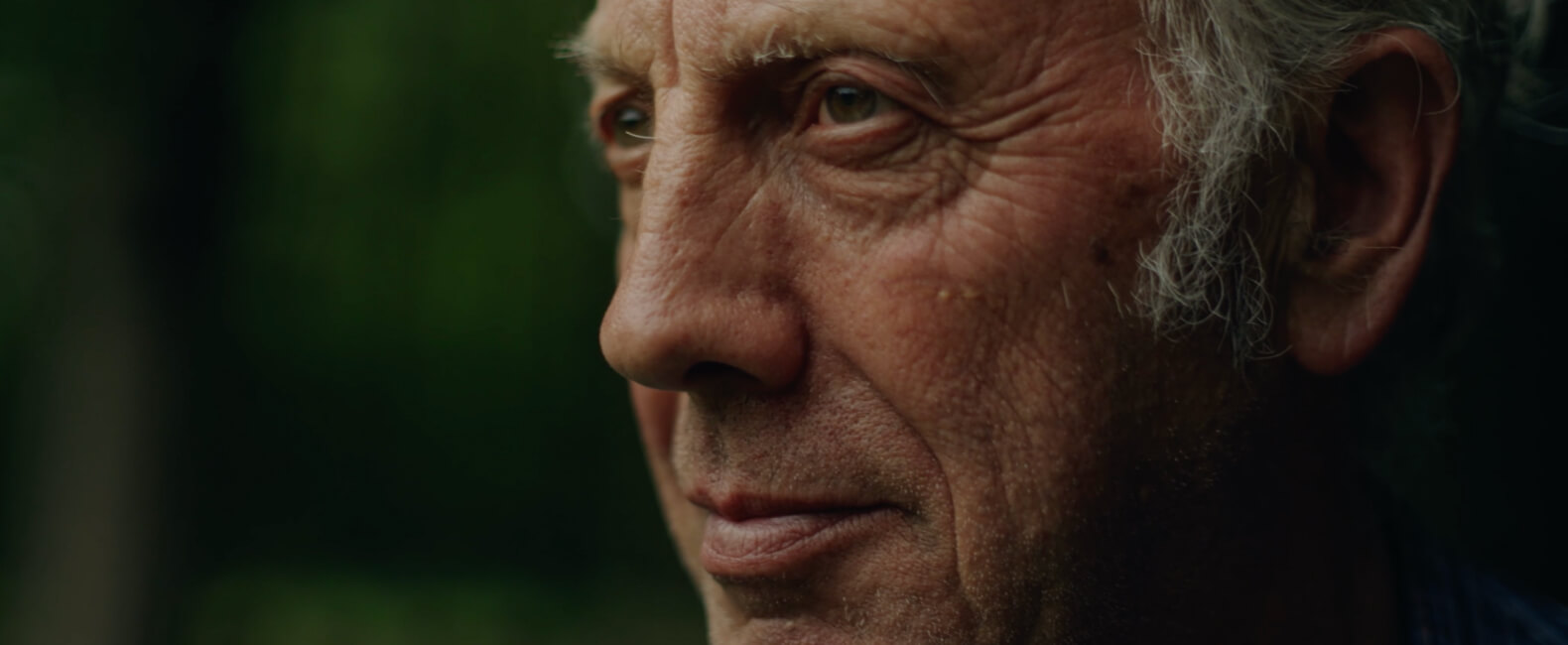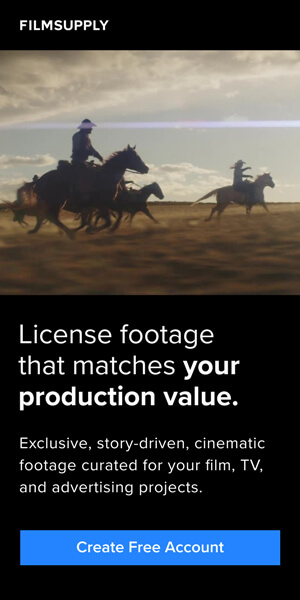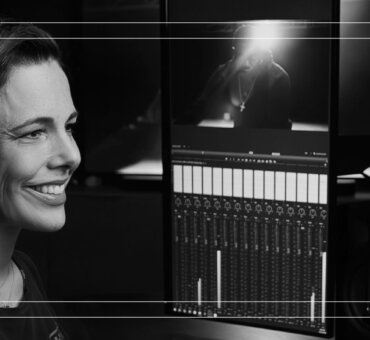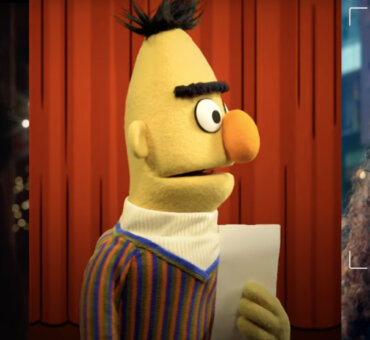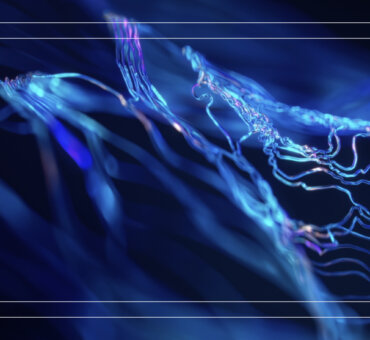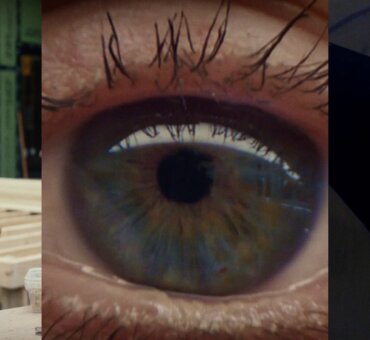Docu-style filmmaking has surged in popularity over recent years, and this trend shows no signs of slowing down. Filmmakers, brands, and audiences alike are drawn to this style for one simple reason: it feels real. Audiences are increasingly seeking stories that reflect genuine human experiences in a raw and emotional way.
A powerful example of this trend in advertising is The Farmer’s Dog commercial titled “Forever,” directed by Goh Irromoto. This poignant ad captures the bond between a dog and its owner. And this ad resonates so deeply because it mirrors life as it truly is: honest, emotional, and deeply human.
RELATED READS: How to Draw out Authenticity in a Documentary Edit
But it’s not just advertising that’s leaning into docu-style storytelling. This technique is (re)making waves in both film and TV, capturing life’s unfiltered moments and presenting them in a raw, captivating way.
Docu-Style Filmmaking in Film
Using documentary techniques within narrative cinema brings a heightened sense of realism to fictional stories.
Here are three notable examples:
What We Do in the Shadows (2014)
Taika Waititi and Jemaine Clement’s 2014 film What We Do in the Shadows took a fresh bite out of the vampire genre by presenting it through the lens of a deadpan documentary.
The film follows four undead flatmates in Wellington, New Zealand, as they navigate everything from chore charts to nightclub etiquette while avoiding sunlight and managing their bloodlust.
By shooting the absurd premise as if it were a real, fly-on-the-wall doc, the filmmakers created a strange alchemy: the more seriously the format took itself, the funnier the film became.
Interviews, awkward silences, and shaky camera moves add texture and believability to a world that’s otherwise completely ridiculous.
This contrast between form and content is what makes the film work, not just as a comedy, but as a clever commentary on both modern life and traditional documentary tropes.
End of Watch (2012)
End of Watch leverages docu-style filmmaking to create a visceral, immersive experience that pulls the audience directly into the lives of two LAPD officers. Directed by David Ayer, the film employs handheld cameras, dash cams, and body cams to capture the raw, chaotic energy of life on the streets of Los Angeles.
RELATED READS: The Power of Unique POV Techniques in Commercial Filmmaking & Advertising
This technique not only heightens the sense of realism but also builds an intimate connection with the characters. It makes their struggles and triumphs feel personal and much more immediate. The gritty, unpolished visuals mirror the unpredictable nature of police work, allowing viewers to experience the tension, danger, and camaraderie firsthand.
By blending docu-style shooting with a fictional narrative, End of Watch achieves a sense of authenticity that makes its emotional impact hit even harder.
Nomadland (2020)
Directed by Chloé Zhao, Nomadland blurs the line between documentary and fiction by casting real-life nomads alongside lead actress Frances McDormand.
The film follows Fern, a woman who embarks on a journey through the American West after losing everything in the Great Recession.
By using real people telling their own stories within the scripted narrative, Zhao creates a deeply immersive and authentic portrayal of life on the road.
The unstructured, flowing storytelling mimics the unpredictability of nomadic life, while the use of real locations and minimal production design adds to the film’s docu-style aesthetic.
Docu-Style Storytelling on the Small Screen
Television has embraced the documentary format to bring realism to fictional and semi-fictional stories.
Here are three recent examples:
Winning Time: The Rise of the Lakers Dynasty (2022-2023)
Winning Time: The Rise of the Lakers Dynasty continues director Adam McKay’s signature foray into docu-style filmmaking, blending his sharp, energetic storytelling with a documentary-inspired approach.
Known for his use of fourth-wall breaks and kinetic visuals, McKay brings the chaotic, glamorous world of 1980s basketball to life. Characters frequently address the camera directly, offering personal insights and context, which creates a sense of immediacy and intimacy.
The use of grainy film aesthetics, handheld shots, and real archival footage further grounds the series in authenticity, making viewers feel like they’re experiencing the rise of the Lakers firsthand.
By merging raw, unpolished visuals with dramatized narratives, McKay’s unique style captures both the legendary personalities and the gritty reality of building a sports dynasty.
American Vandal (2017-2018)
American Vandal cleverly uses docu-style filmmaking to satirize the true-crime genre while simultaneously delivering a surprisingly thoughtful and compelling mystery.
The Emmy-nominated series adopts a mockumentary format, complete with interviews, reenactments, and investigative footage, mimicking the style of serious crime documentaries. This realistic approach makes the absurd premise—investigating high school pranks—feel both credible and engrossing.
By presenting teenage drama with the gravitas of a true-crime investigation, the series highlights the ridiculousness of its subject while also exploring deeper themes of perception, truth, and social dynamics.
The docu-style execution enhances the humor and lends unexpected emotional weight, keeping viewers hooked from start to finish.
What We Do in the Shadows (2019–2024)
When the concept of a vampire mockumentary transitioned to TV in 2019, the docu-style foundation remained—but the storytelling expanded in scope, depth, and character development.
Set in Staten Island instead of Wellington, the series reimagines the vampire roommate scenario with a new cast, while fully committing to the mockumentary structure.
Unlike the film, the show leans harder into serialized storytelling, allowing character arcs and absurd lore to develop over time.
The documentary crew, now a recurring off-screen presence, becomes part of the humor—at times in danger, ignored, or unexpectedly acknowledged. The interviews continue, but they’re used more strategically for comedic timing or emotional beat drops, rather than purely for exposition.
What sets the series apart is how it balances complete chaos with a weird kind of sincerity.
Through the lens of the mockumentary format, we’re not just watching vampires be silly—we’re watching them reveal their insecurities, rivalries, and bizarre forms of friendship in a way that feels strangely relatable. It’s proof that docu-style storytelling doesn’t just work for grounded drama—it thrives in the weird and wonderful.
Docu-Style Narratives in Advertising
Brands are increasingly turning to docu-style techniques to forge genuine connections with their audiences. This approach allows them to tell stories that feel real and relatable, breaking away from overly polished visuals and scripted dialogue.
Here are three standout examples of docu-style filmmaking in advertising:
The Farmer’s Dog: “Forever”
Directed by Goh Irromoto, The Farmer’s Dog ad titled “Forever” is a masterclass in using docu-style filmmaking to evoke deep emotional responses. The commercial tells the story of a dog and its owner growing older together, emphasizing the importance of more years spent with loved ones.
RELATED READS: Behind the Work, Episode 5: Director Goh Iromoto on Filming With Feeling
The ad’s visual language relies heavily on natural light, handheld camera work, and real, unscripted moments that reflect a life shared with a pet. Rather than feeling scripted or staged, the ad’s candid moments create a sense of authenticity that resonates with pet owners.
The choice to shoot in a documentary style makes viewers feel as if they are glimpsing real moments between the owner and the dog, reinforcing the message that time spent together is invaluable.
This approach not only strengthens the brand’s message but also enhances its emotional impact, proving that real, unguarded storytelling can move audiences in a powerful way.
RELATED READS: Storytelling Ads Stand Out While Landing Top Marks During The Big Game
Sonos x Abbey Road Studios: “ReScored”
The Sonos x Abbey Road Studios campaign is a perfect example of how docu-style filmmaking can elevate advertising into something truly meaningful.
The piece tells the emotional story of filmmaker Luke Flanagan and his short film, Mind the Gap, as it’s reimagined with a new score by Oscar-winning composer Steven Price (Gravity, Baby Driver, Our Planet).
The decision to opt for a docu-style approach helps the spot feel more like a behind-the-scenes short doc than a branded ad. It’s intimate, human, and completely immersive.
RELATED READS: The Story’s The Solution: Taking Branded Content Further
What makes it stand out is how naturally the storytelling flows. You’re brought inside the creative process at Abbey Road, witnessing the magic of sound design, collaboration, and craftsmanship—all without a hard sell.
Sonos doesn’t need to shout; their presence is felt through the quality, emotion, and attention to detail. It’s branded content that respects the audience and champions artistry, and that’s exactly why it hits so hard.
Nike: “Dream Crazy”
Narrated by Colin Kaepernick, Dream Crazy is one of Nike’s most iconic ads in recent memory, leveraging docu-style filmmaking to deliver a message of resilience and ambition.
The ad features real athletes, both professional and amateur, overcoming adversity and pushing the limits of human potential. Instead of highly stylized visuals, the ad opts for raw, powerful footage that feels spontaneous and unfiltered, capturing the determination and struggles of athletes from diverse backgrounds.
The handheld camera work and unstructured, candid moments give the ad a documentary feel, as if the audience is witnessing real life unfold rather than watching a curated advertisement.
The combination of Kaepernick’s narration and the genuine stories of athletes creates an emotional crescendo, making the message of “believing in something, even if it means sacrificing everything” feel not only authentic but also deeply inspiring.
By grounding its brand ethos in real-world stories, Nike successfully connects with audiences on a personal and motivational level.
RELATED READS: Designing a Film: The Artful Intentionality Behind ‘Stories We Tell Ourselves’
Why Docu-Style Works
The appeal of docu-style filmmaking lies in its imperfections. By embracing shaky cameras, unpolished dialogue, and raw emotion, this technique creates a sense of vulnerability and truth.
For filmmakers, the challenge lies in balancing authenticity with narrative cohesion. It’s not enough to merely capture real moments—the story still needs to be compelling and purposeful.
Whether through hybrid narratives, mockumentaries, or emotionally driven ads, this approach offers a way to bridge the gap between fiction and reality, making stories feel more impactful and human.
RELATED READS: The Hard Truth: YETI’s Scott Ballew on Authentic Storytelling
License Cinematic Docu-Style Footage
You can license fully released footage from our Docu-Style collection — only on Filmsupply.
